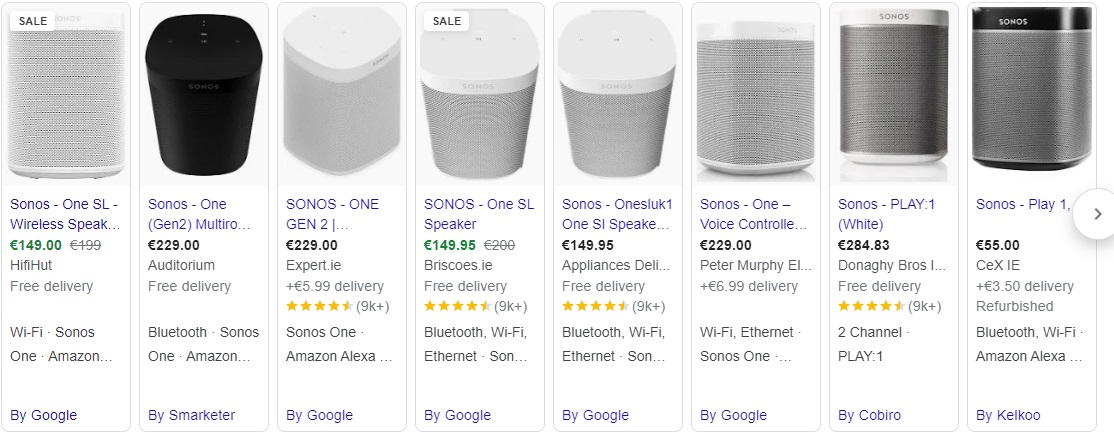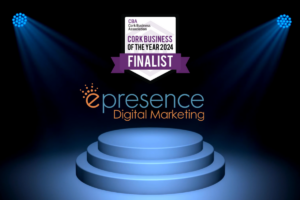Understanding the relationship of the 4 P’s to Digital Marketing: A Deeper Dive
Contents:
- Product: Crafting Value in the Virtual Sphere
- Price: Strategic Pricing in the Digital Landscape
- Place: Navigating Digital Channels for Maximum Reach
- Promotion Strategies: Building Digital Buzz
- Conclusion
The 4 P’s of marketing, also known as the marketing mix, are fundamental principles that guide businesses in developing effective marketing strategies. Let’s delve deeper into each P and explore how they seamlessly integrate into the digital marketing landscape.
Ideally, your Marketing Department or Partner should be involved in the development of the 4 Ps of the Marketing Mix from start to finish, unfortunately, many companies only seek professional marketing assistance when it comes to the Promotion stage of the offered product or service. This may result in unsatisfactory results as all aspects of the Marketing Mix together work to maximise the chances of success.
1: Product: Crafting Value in the Virtual Sphere
The Product could be considered the starting point of any Marketing Mix, without a product there is nothing to market. What the Product is and how it fits into the Market will determine further strategies such as Price, Place and Promotion.
There are a few questions that help determine the next steps:
- Is it a Brand New Product completely new to the market? It’s unlikely that the market will be aware of an innovative product so there may be a need for substantial investment in awareness and educational campaigns such as Google Banner and Social Media Ads combined with a keen pricing strategy to encourage quicker adoption and prevent competitors from entering the market. During this stage, it is beneficial to aim your marketing at the Innovators and Early Adopters. As time progresses and awareness improves you can shift your campaigns to include more Inbound Marketing Techniques such as SEO and Google Search Ads and shift the target market to the Early Majority, as demand for the product increases the pricing could be shifted to improve profits. New products should undergo extensive Market Research before launch to determine potential market demand and other challenges, it’s sometimes not a simple process to get a new product to market but effective research and realistic planning will make the difference between success and failure.
- Is it an alternative or substitute for an existing product? You may need to invest in both Awareness and educational Campaigns depending on how different your product is compared to existing alternatives. Your pricing strategy will depend on the benefits of your product vs the alternatives and business requirements, if your product offers clear and real benefits you may be able to charge a premium for this while maintaining rapid growth.
- Do you offer an existing known product or service that many others already provide? This is often the easiest market to enter, but do your research first – Is it a growing Market? Is there space in the market for another competitor? Is there a gap in the market to do something differently? What value can you add? The advantage to this market is that you don’t need to create awareness of the product or service just your brand so you can immediately commence with both outbound and inbound marketing strategies. If you desire rapid growth and market share gain then a competitive pricing approach may be required, but this should be temporary.
In the digital age, a ‘product’ extends beyond physical goods to encompass a wide array of offerings, including digital services, experiences, and content. The core concept remains the same: understanding and delivering value to the target audience. Digital products must align with user needs and preferences, and businesses should leverage analytics and customer feedback to refine and enhance their offerings continuously.
Digital products can take various forms, from software applications and online courses to subscription-based services and virtual experiences. The key is to focus on user experience, innovation, and adaptability to emerging technologies.
One basic truth remains valid. If you have an extraordinary product you may get away with ordinary marketing however, if you have an ordinary product you may require extraordinary marketing to succeed, so consider the product carefully and do your Marketing Research, if you have a product or service that people want or need you are halfway to success.
2: Price: Strategic Pricing in the Digital Landscape
Pricing strategies in the digital realm go beyond assigning numerical values; they involve a nuanced understanding of perceived value, user experience, and market dynamics. Dynamic pricing, a hallmark of digital markets, allows businesses to adjust prices in real time based on demand, supply, and competitor activities.
For example, during product launches or promotional events, businesses can employ value-based pricing to reflect the unique features and benefits of their digital products. Subscription models, freemium strategies, and personalized pricing further demonstrate the flexibility and responsiveness required in digital pricing.
Pricing Strategies Across the Product Life Cycle:
Understanding and implementing appropriate pricing strategies at different stages of the product life cycle is critical for sustained success in the digital market.
- Introduction Stage: Penetration Pricing
During the introduction of a new digital product, businesses often adopt penetration pricing. This involves setting a relatively low initial price to quickly gain market share and attract early adopters. The goal is to build awareness and generate initial traction. As the product gains acceptance, businesses can gradually adjust pricing based on feedback and market response.
- Growth Stage: Competitive Pricing
In the growth stage, the focus shifts to expanding market share and maximizing revenue. Competitive pricing strategies involve setting prices in line with or slightly below competitors’ prices. This approach helps capitalize on increased demand while maintaining a competitive edge. Additionally, businesses may introduce bundled pricing or discounts to encourage larger purchases and customer loyalty.
- Maturity Stage: Price Stabilization and Differentiation
As the product reaches maturity, price stabilization becomes crucial. Businesses may choose to maintain prices at a consistent level while differentiating their offerings to stand out in a crowded market. This is the stage where customer loyalty and brand reputation play a significant role. Innovative features, enhanced customer support, or exclusive content can be used as differentiation strategies to justify pricing.
- Decline Stage: Price Adjustments or Exit Strategies
In the decline stage, where the product may face saturation or obsolescence, businesses need to make strategic decisions. Price adjustments, such as discounts or bundling, can be employed to extract the remaining value from the product. Alternatively, businesses may choose to phase out the product gracefully, redirecting resources to newer offerings. Understanding the market signals and being agile in adjusting pricing is key during this stage.
It’s important to realise that the digital era has enabled easy product and price comparisons with a multitude of aggregators and comparison sites. Google Shopping advertising immediately springs to mind – shoppers are presented with multiple listings of the same product from different suppliers and will most likely choose the cheapest, why not? it’s the same product. See the example below where we performed a search for “Sonos- One for sale”

3: Place: Navigating Digital Channels for Maximum Reach
In the digital era, ‘Place’ transcends physical locations and encompasses the online channels where businesses connect with their audience. E-commerce platforms, social media, mobile apps, and websites become crucial touchpoints. Successful businesses leverage omnichannel marketing strategies to ensure a seamless and integrated customer experience across various digital platforms.
Search engine optimization (SEO) plays a vital role in enhancing digital visibility, ensuring that the digital ‘place’ is not only expansive but also optimized for discoverability. The digital ‘Place’ strategy is about meeting the audience where they are and ensuring a consistent brand presence across diverse online environments.
Just like with a brick-and-mortar store foot traffic is important. This is the reason why retail outlets tend to gather in a specific area or within a shopping centre to enhance the attraction to potential customers and attract more people to their outlet. The same is true in the digital era in terms of competition for the customer’s attention. Marketing online is all about being more visible than your competitors attracting more potential customers to your website or online store and then converting these visitors into leads or customers.
This can be achieved by a range of Paid and Non-Paid Digital Marketing techniques and platforms, but the basics of marketing remain the same – it’s all about getting the Right Message to the Right Person at the Right Time. The digital era makes it easier to obtain immediate feedback or data enabling you to make quicker decisions and alter strategies accordingly.
4: Promotion Strategies: Building Digital Buzz
Promotion in the digital sphere extends far beyond traditional advertising. It involves a holistic approach that includes content marketing, influencer collaborations, social media engagement, and search engine optimization. The digital landscape provides unique opportunities for storytelling through multimedia content, enabling businesses to connect with their audience on a deeper level.
Data-driven insights play a crucial role in tailoring promotions to specific audience segments. By analyzing user behaviour, preferences, and engagement patterns, businesses can refine their promotional strategies for maximum impact.
The immediate nature of Digital Marketing allows for greater flexibility and experimentation, one of the basic premises of Digital Marketing is to never stop experimenting. Results can always be improved on by testing, comparing and experimenting.
Conclusion
In conclusion, integrating the 4 P’s of marketing into digital strategies and implementing effective pricing strategies throughout the product life cycle are essential for success in the dynamic digital landscape. By embracing innovation, leveraging digital channels, and adapting to changing market conditions, businesses can navigate the complexities of digital marketing and stay ahead of the competition.
Why not give us a call some some excellent Digital Marketing advice for your business?






